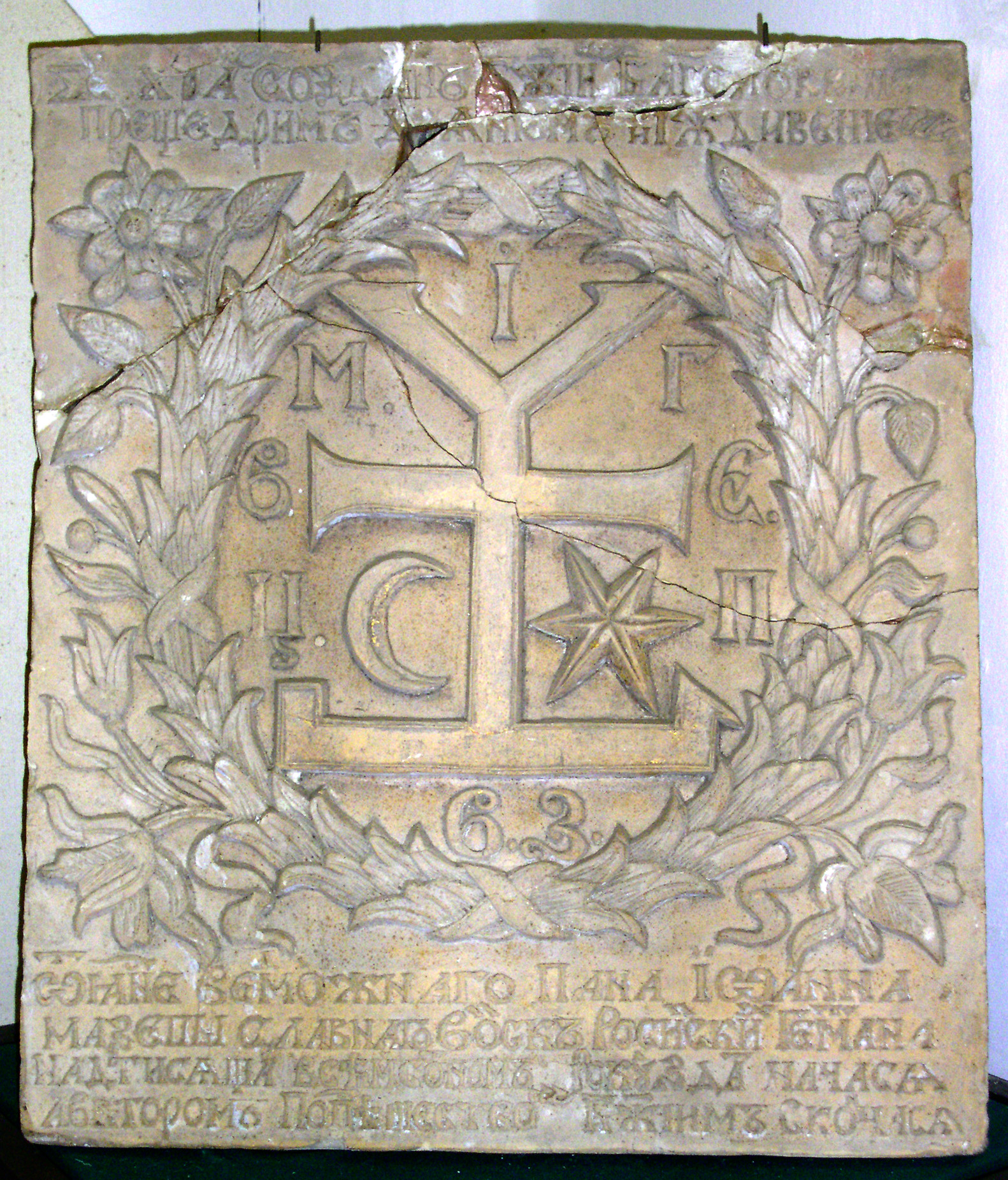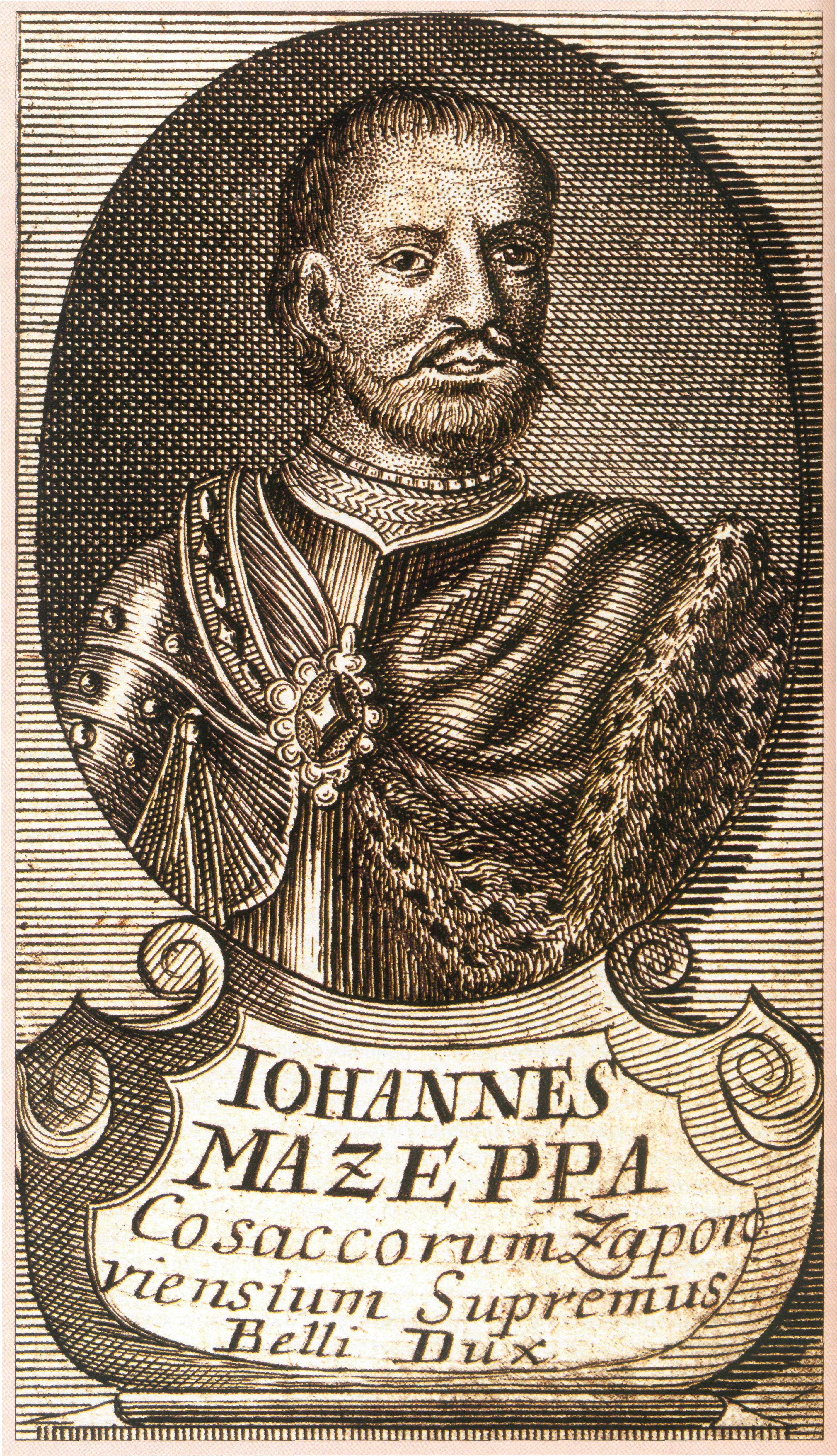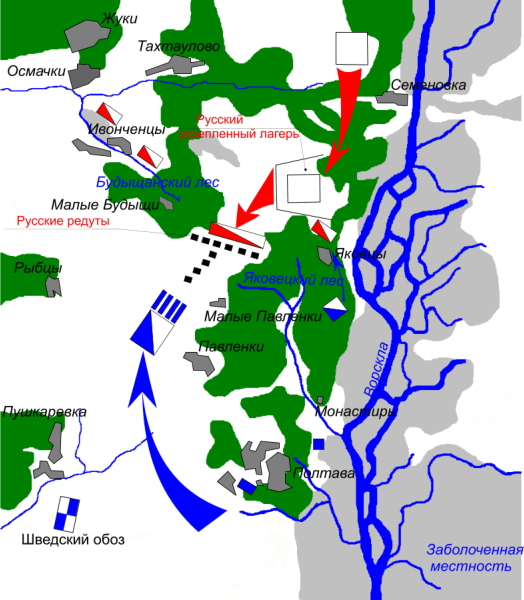|
Orlyk
Pylyp Stepanovych Orlyk ( uk, Пилип Степанович Орлик, pl, Filip Orlik; October 11 (21), 1672 – May 26, 1742) was a Zaporozhian Cossack starshyna, Hetman of Ukraine in exile, diplomat, secretary and close associate of Hetman Ivan Mazepa. He is the author of the Constitution of Pylyp Orlyk. Biography Pylyp Orlyk was born in the village of Kosuta, Ashmyany county, Grand Duchy of Lithuania ( Vileyka district of modern-day Belarus), in a family of Czech-Belarusian origin. Orlyk first studied at the Jesuit college in Vilnius and until 1694 at Kyiv Mohyla Academy. In 1698 he was appointed secretary of the consistory of Kiev metropolia. In 1699 he became a senior member of Hetman Ivan Mazepa's General Military Chancellery and 1706 was appointed general chancellor and at that position he was Mazepa's closest aide, facilitated Mazepa's secret correspondence with the Poles and Swedes, and assisted Mazepa in his efforts to form an anti-Russian coalition ... [...More Info...] [...Related Items...] OR: [Wikipedia] [Google] [Baidu] |
Constitution Of Pylyp Orlyk
Pylyp Orlyk’s Constitution ( uk, Конституція Пилипа Орлика (''Konstytutsiya Pylypa Orlyka''), formally titled as The Treaties and Resolutions of the Rights and Freedoms of the Zaporozhian Army ( uk, Договори і Постановлення Прав і вольностей Війська Запорозького (''Dohovory i Postanovlennya Prav i volʹnostey Viysʹka Zaporozʹkoho'') is a constitutional document written by the Hetman of Ukraine, Pylyp Orlyk, the Cossack elders and the Cossacks of the Zaporozhian Army on the 5 April 1710 in the city of Bender (Tighina) in the Principality of Moldavia. It established the principle of the separation of powers in government between the legislative, executive, and judiciary branches well before the publication of Montesquieu's ''Spirit of the Laws''. The document limited the executive authority of the hetman, and established a Cossack parliament called the (General ''Rada''). The Old Ukrainian-langu ... [...More Info...] [...Related Items...] OR: [Wikipedia] [Google] [Baidu] |
Hanna Hertsyk
Hanna Hertsyk (died around 1752на основі знахідки Барвінського Богдана), was a Ukrainian Hetmana by marriage to Pylyp Orlyk, Hetman of Ukraine (r. 1708-1742). She is known for her support of her spouse in the fight for an independent Ukraine during the Great Northern War and took responsibility for his affairs during his diplomatic missions in Europe. She joined him in exile and lived in Sweden in 1709–21, during which she corresponded with several rulers in Europe to support her husband's cause. She was the daughter of Pavlo Semenovych Hertsyk. Biography Hanna Hertsyk was born to a noble Kozak ''starshyna'' family with Jewish roots. She was the daughter of Pavlo Hertsyk, a Poltavan colonel and General Osavul, and his wife Iryna Yablons`ka. In 1698, she married Pylyp Orlyk, the chancellor (писар'', lit.'' scribe) for the Poltava regiment. This marriage contributed to Orlyk's career: through marriage, Hanna brought him villages in ... [...More Info...] [...Related Items...] OR: [Wikipedia] [Google] [Baidu] |
Zaporozhian Cossacks
The Zaporozhian Cossacks, Zaporozhian Cossack Army, Zaporozhian Host, (, or uk, Військо Запорізьке, translit=Viisko Zaporizke, translit-std=ungegn, label=none) or simply Zaporozhians ( uk, Запорожці, translit=Zaporozhtsi, translit-std=ungegn) were Cossacks who lived beyond (that is, downstream from) the Dnieper Rapids, the land also known historically as the Wild Fields in what is today central and eastern Ukraine. Much of this territory is now flooded by the waters of the Kakhovka Reservoir. The Zaporozhian Sich grew rapidly in the 15th century from serfs fleeing the more controlled parts of the Polish–Lithuanian Commonwealth. It became established as a well-respected political entity with a parliamentary system of government. During the course of the 16th, 17th and well into the 18th century, the Zaporozhian Cossacks were a strong political and military force that challenged the authority of the Polish–Lithuanian Commonwealth, the Tsardom of Ru ... [...More Info...] [...Related Items...] OR: [Wikipedia] [Google] [Baidu] |
Mazepa
Ivan Stepanovych Mazepa (also spelled Mazeppa; uk, Іван Степанович Мазепа, pl, Jan Mazepa Kołodyński; ) was a Ukrainian military, political, and civic leader who served as the Hetman of Zaporizhian Host in 1687–1708. He was awarded a title of Prince of the Holy Roman Empire in 1707 for his efforts for the Holy League. The historical events of Mazepa's life have inspired many literary, artistic and musical works. He was famous as a patron of the arts. Mazepa played an important role in the Battle of Poltava (1709), where after learning that Tsar Peter I intended to relieve him as acting Hetman (military leader) of Zaporozhian Host (a Cossack state) and to replace him with Alexander Menshikov, he defected from his army and sided with King Charles XII of Sweden. The political consequences and interpretation of this defection have resonated in the national histories both of Russia and of Ukraine. The Russian Orthodox Church laid an anathema (excommunica ... [...More Info...] [...Related Items...] OR: [Wikipedia] [Google] [Baidu] |
Hetmans Of Ukrainian Cossacks
Hetman of Zaporizhian Cossacks is a historical term that has multiple meanings. Officially the post was known as Hetman of the Zaporizhian Host ( uk, Гетьман Війська Запорозького, ''Hetman Viyska Zaporozkoho'').Mytsyk, Yu. Hetman (ГЕТЬМАН)'. Encyclopedia of History of Ukraine. Hetman of Zaporizhian Cossacks as a title was not officially recognized internationally until the creation of the Cossack Hetmanate. With the creation of Registered Cossacks units their leaders were officially referred to as Senior of His Royal Grace Zaporozhian Host ( uk, старший його Королівської Милості Війська Запорозького, ''Starshyi Yoho Korolivskoyi Mylosti Viyska Zaporozkoho''). Before 1648 and the establishment of the Cossack Hetmanate there were numerous regional hetmans across the Dnieper-banks, who usually were starostas or voivodes. The first widely recognized hetman of Zaporizhia was Dmytro Vyshnevetsky, however ... [...More Info...] [...Related Items...] OR: [Wikipedia] [Google] [Baidu] |
Ivan Mazepa
Ivan Stepanovych Mazepa (also spelled Mazeppa; uk, Іван Степанович Мазепа, pl, Jan Mazepa Kołodyński; ) was a Ukrainian military, political, and civic leader who served as the Hetman of Zaporizhian Host in 1687–1708. He was awarded a title of Prince of the Holy Roman Empire in 1707 for his efforts for the Holy League. The historical events of Mazepa's life have inspired many literary, artistic and musical works. He was famous as a patron of the arts. Mazepa played an important role in the Battle of Poltava (1709), where after learning that Tsar Peter I intended to relieve him as acting Hetman (military leader) of Zaporozhian Host (a Cossack state) and to replace him with Alexander Menshikov, he defected from his army and sided with King Charles XII of Sweden. The political consequences and interpretation of this defection have resonated in the national histories both of Russia and of Ukraine. The Russian Orthodox Church laid an anathema (excommunica ... [...More Info...] [...Related Items...] OR: [Wikipedia] [Google] [Baidu] |
Kyiv Mohyla Academy
National University of Kyiv-Mohyla Academy ( NaUKMA) ( uk, Національний університет «Києво-Могилянська академія» (НаУКМА)) is a national, research university located in Kyiv, Ukraine. The Kyiv-Mohyla Academy, the school's predecessor, was established in 1615. The NaUKMA is located on the Academy's grounds in the ancient Podil neighborhood. In 1991, it was re-organized, and teaching began the following year. NaUKMA has the highest level of accreditation as outlined by the Ministry of Education and Science of Ukraine, and is one of the thirteen educational institutions in Ukraine having a status of a research and autonomous university. NaUKMA takes part in numerous international university collaborations, such as the European University Association. The university is bilingual in Ukrainian and English. It is one of Ukraine's few universities with internationally recognized diplomas. With around 4000 students, NaUKMA is one of ... [...More Info...] [...Related Items...] OR: [Wikipedia] [Google] [Baidu] |
Charles XII Of Sweden
Charles XII, sometimes Carl XII ( sv, Karl XII) or Carolus Rex (17 June 1682 – 30 November 1718 O.S.), was King of Sweden (including current Finland) from 1697 to 1718. He belonged to the House of Palatinate-Zweibrücken, a branch line of the House of Wittelsbach. Charles was the only surviving son of Charles XI and Ulrika Eleonora the Elder. He assumed power, after a seven-month caretaker government, at the age of fifteen. In 1700, a triple alliance of Denmark–Norway, Saxony– Poland–Lithuania and Russia launched a threefold attack on the Swedish protectorate of Holstein-Gottorp and provinces of Livonia and Ingria, aiming to draw advantage as the Swedish Empire was unaligned and ruled by a young and inexperienced king, thus initiating the Great Northern War. Leading the Swedish army against the alliance, Charles won multiple victories despite being usually significantly outnumbered. A major victory over a Russian army some three times the size in 1700, at the Ba ... [...More Info...] [...Related Items...] OR: [Wikipedia] [Google] [Baidu] |
Battle Of Poltava
The Battle of Poltava; russian: Полта́вская би́тва; uk, Полта́вська би́тва (8 July 1709) was the decisive and largest battle of the Great Northern War. A Russian army under the command of Tsar Peter I defeated a Swedish army, under the command of Carl Gustaf Rehnskiöld. The battle put an end to the status of the Swedish Empire as a European great power, as well as its eastbound expansion, and marked the beginning of Russian hegemony in Northern Europe. During the course of six years in the initial stages of the war, King Charles XII and the Swedish Empire had defeated almost all participants in the anti-Swedish coalition, which initially consisted of the Polish-Lithuanian Commonwealth, Denmark-Norway and the Tsardom of Russia. The latter under Tsar Peter I's rule was the only one still undefeated. Charles XII therefore chose to invade Russia in the autumn of 1707 and march towards Moscow with a large Swedish army. However, the campaign w ... [...More Info...] [...Related Items...] OR: [Wikipedia] [Google] [Baidu] |
Philipp Orlik Signature 1710
Philipp is both a surname and a given name. Notable people with the name include: "Philipp" has also been a shortened version of Philippson, a German surname especially prevalent amongst German Jews and Dutch Jews. Surname * Adolf Philipp (1864–1936), German/American actor, composer and playwright * David Philipp, biologist * David Philipp (footballer) (born 2000), German footballer * Elke Philipp (born 1964), German Paralympic equestrian * Elliot Philipp (1915–2010), British gynaecologist and obstetrician * Franz Philipp (1890–1972), German church musician and composer * Julius Philipp (1878–1944), German metal trader * Lutz Philipp (1940–2012), German long-distance runner * Oscar Philipp (1882–1965), German and British metal trader * Paul Philipp (born 1950), Luxembourgian football player and manager * Peter Philipp (1971–2014), German writer and comedian * Robert Philipp (1895–1981), American Impressionist painter Given name * Philipp Bönig (born 1980) ... [...More Info...] [...Related Items...] OR: [Wikipedia] [Google] [Baidu] |
Belarusians
, native_name_lang = be , pop = 9.5–10 million , image = , caption = , popplace = 7.99 million , region1 = , pop1 = 600,000–768,000 , region2 = , pop2 = 521,443 , region3 = , pop3 = 275,763 , region4 = , pop4 = 105,404 , region5 = , pop5 = 68,174 , region6 = , pop6 = 66,476 , region7 = , pop7 = 61,000 , region8 = , pop8 = 41,100 , region9 = , pop9 = 31,000 , region10 = , pop10 = 20,000 , region11 = , pop11 = 15,565 , region12 = , pop12 = 12,100 , region13 = , pop13 = 11,828 , region14 = , pop14 = 10,054 , region15 = , pop15 = 8,529 , region16 = , pop16 = 7,500 ... [...More Info...] [...Related Items...] OR: [Wikipedia] [Google] [Baidu] |
Tighina
Bender (, Moldovan Cyrillic: Бендер) or Bendery (russian: Бендеры, , uk, Бендери), also known as Tighina ( ro, Tighina), is a city within the internationally recognized borders of Moldova under ''de facto'' control of the unrecognized Pridnestrovian Moldavian Republic (Transnistria) (PMR) since 1992. It is located on the western bank of the river Dniester in the Romanian historical region of Bessarabia. Together with its suburb Proteagailovca, the city forms a municipality, which is separate from Transnistria (as an administrative unit of Moldova) according to Moldovan law. Bender is located in the buffer zone established at the end of the 1992 War of Transnistria. While the Joint Control Commission has overriding powers in the city, Transnistria has ''de facto'' administrative control. The fortress of Tighina was one of the important historic fortresses of the Principality of Moldova until 1812. Name First mentioned in 1408 as ''Tyagyanyakyacha'' (Тя ... [...More Info...] [...Related Items...] OR: [Wikipedia] [Google] [Baidu] |







